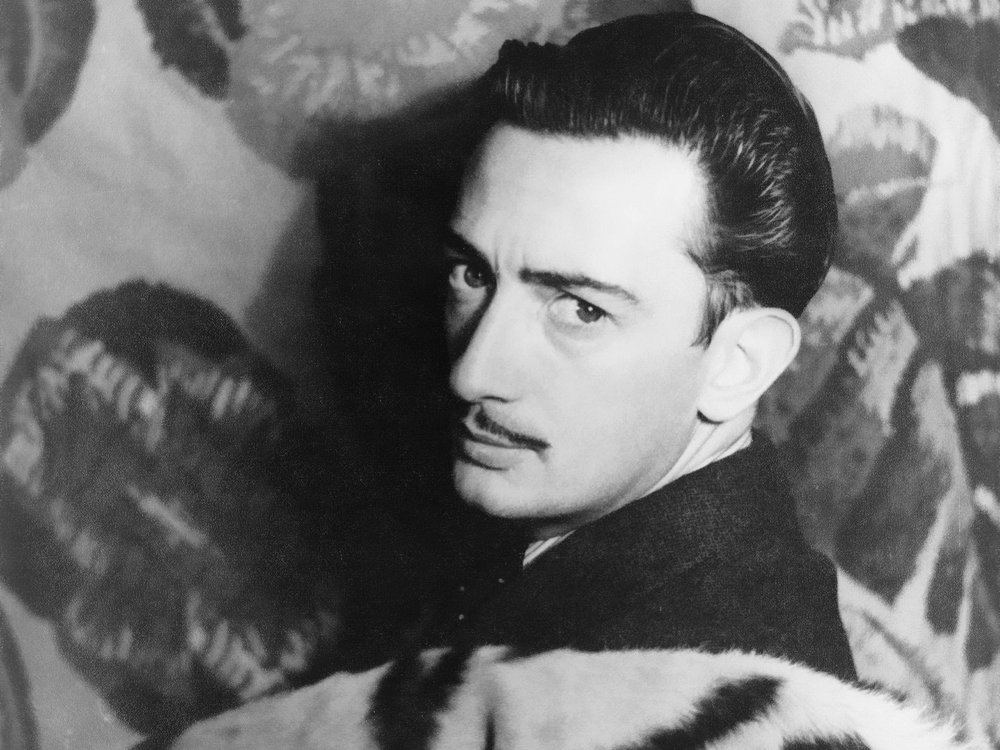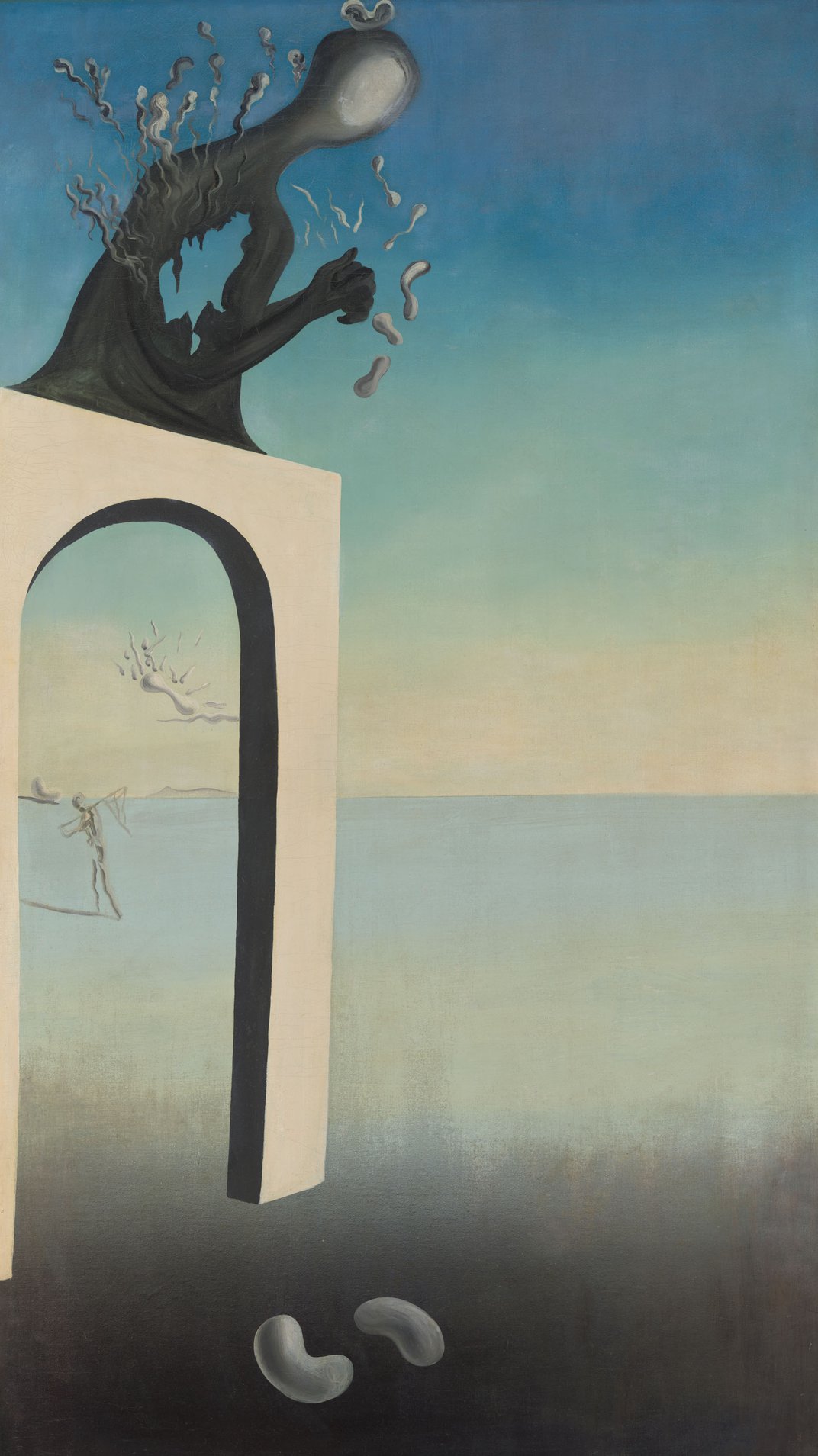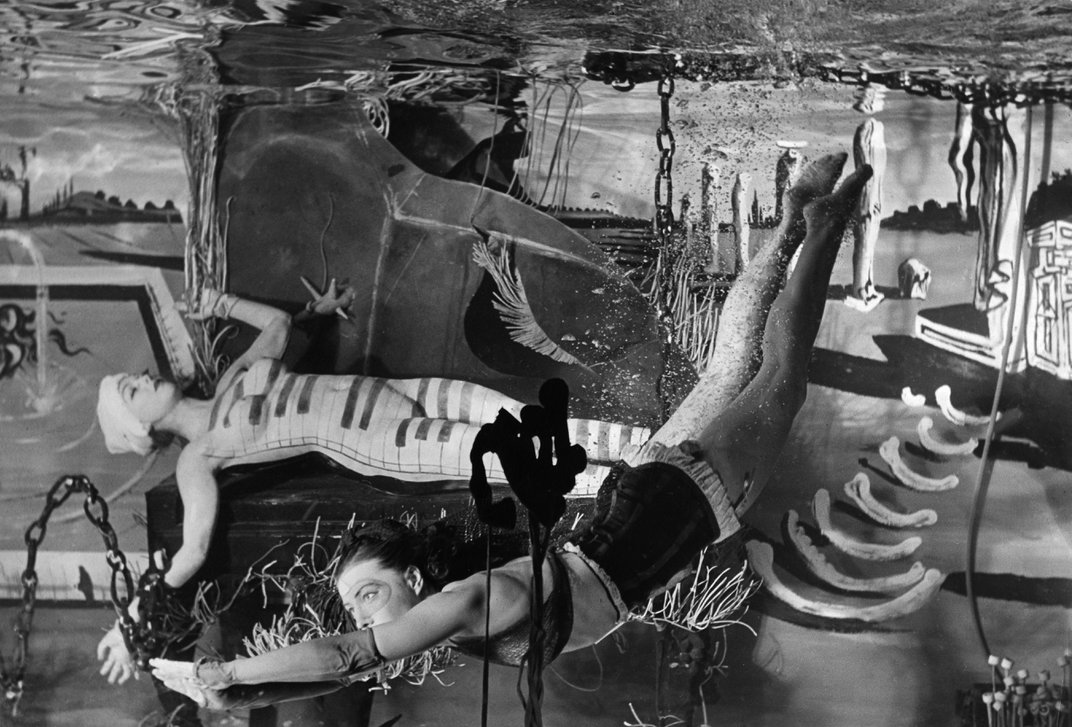Did Salvador Dalí Paint This Enigmatic Artwork?
After two curators began doubting the painting’s authenticity, they made an unexpected discovery about its origins

As curators Caitlin Haskell and Jennifer Cohen were planning a new exhibition on Salvador Dalí at the Art Institute of Chicago, they hit a roadblock that was rather large—specifically, about seven feet tall.
Dalí’s Visions of Eternity, a large oil-on-canvas artwork, has resided at the museum since 1987, when a former trustee donated it. The curators didn’t give it a second thought until they began planning the show, “Salvador Dalí: The Image Disappears.” As they immersed themselves in Dalí’s work, they started wondering whether the painting was authentic.
“We really couldn’t find anything like it across his work,” Cohen tells CNN’s Jacqui Palumbo.

The Art Institute of Chicago / Gift of Mr. and Mrs. Joseph R. Shapiro / © Salvador Dalí, Fundació Gala-Salvador Dalí / Artists Rights Society (ARS), New York, 2023
Born in Spain in 1904, Dalí grew to become one of the icons of Surrealism, the artistic movement known for its dreamlike depictions of the subconscious. He is known for repeating images across paintings, like burning giraffes or the melting clocks made famous by The Persistence of Memory (1931). But Visions of Eternity, dated to 1936, was missing elements found in Dalí’s other works, drawing suspicion from Haskell and Cohen.
“The details in Visions of Eternity—a shadowy figure perched atop an archway with a gaping hole in its stomach, someone in the distance carrying a bindle, and three beans—seemed to be unique to this painting,” writes Sarah Cascone of Artnet.
The size of the piece also set off warning bells for the two curators, who knew that Dalí’s work at this time tended to be smaller in scale.
So the pair got to work, combing through Dalí’s oeuvre in search of information about the mysterious painting. Per CNN, Cohen soon stumbled across an important clue: an illustration that appeared in Vogue magazine in 1939, depicting the same hunched as Visions of Eternity.
The Vogue article describes a pavilion designed by Dalí at the 1939 world’s fair in New York City, full of the painter’s iconic imagery (melting clocks and all). As the curators studied photographs of the pavilion, they noticed that a large mural, titled Dream of Venus, depicted the exact same scene as Visions of Eternity. They celebrated, thinking they’d found even more evidence that Visions of Eternity was authentic.

The truth was more complicated. When the Art Institute’s conservators reviewed the images, they made a second discovery: Visions of Eternity and Dream of Venus were the same artwork. The museum’s painting had been cut from the larger mural at the world’s fair.
“It’s a huge discovery, and we are presenting that for the first time,” Haskell tells Kyle MacMillan of the Chicago Sun-Times.
Now renamed Dream of Venus, the 7- by 4-foot panel is on display at the Art Institute. And although many questions remain—why the canvas was cut from the original, where several of the other panels are today, what happened to this panel before the Art Institute trustee purchased it in 1966—experts can say with confidence that the work is authentic.
The new exhibition, which opened earlier this month, spotlights two of Dalí’s “defining, if contradictory, impulses: an immense desire for visibility and the urge to disappear,” per a statement from the museum.
Originally, Haskell and Cohen had hoped to shift the focus away from Dalí’s personal intrigue and back towards his art. They tell the Chicago Sun-Times that the artist gets a negative reputation in the modern art world because of his infamously lavish life.
“I think [the show] is going to knock people’s socks off, because people have stopped looking at the paintings,” says Haskell. “They think they know Dalí, but they don’t.”
“Salvador Dalí: The Image Disappears” will be on view at the Art Institute of Chicago through June 12.